A recent post showed how little some of you good folks are driving your cars. This isn't a good thing as it allows a formation of carbon to coat the combustion chamber and valves which diminishes engine performance. Yes, an occasional burst down the lane is beneficial but cannot compare to a regular driving regimen like your everyday vehicle. In an effort to remedy this situation, today we will use an old timers trick to clean the carbon out. This is for all the resident old timers and the sooner or later old timers. The even better news is it will cost you nothing but a smile.
We will start by explaining we are using a steam cleaning method to remove the combustion chamber deposits. This is done by squirting water into the mouth of each carburetor with the engine at FULL operating temperature. The spray of water mixing with the fuel/air is converted to steam upon ignition to wash away the deposits thru the exhaust.
The engine must be kept revved up during the water ingestion and not allowed to bog. As the engine begins to bog, the water flow is stopped and the engine revs allowed to recover. At no time must the engine die as the water will wash down past the rings into the crankcase. Keeping the engine revved is important.
Do one carburetor at a time. Continue the process for about 5 minutes going back and forth between the carburetors. Then let the engine idle for several more minutes.
Before commencing, listen to the exhaust pulse at the tailpipe and note it's sound character. Afterwards, recheck the exhaust pulse to observe the change. The cleaner the combustion chambers, the deeper the sound pulse will be and the clearer you will be able to hear the valve action. If you've ever listened to a new engine or freshly overhauled engine, you'll know what I mean.
To start, here is the engine with the air cleaner box removed and the battery setting in place.
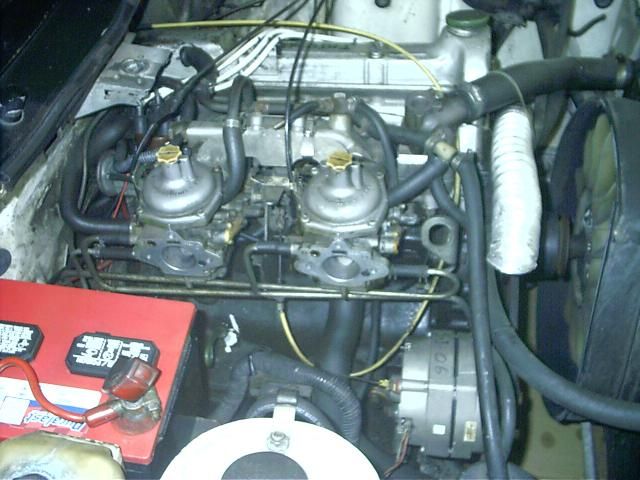
Start the engine allowing it to reach full operating temperature. We are using a common gardening spray bottle found on the machine shed shelf used for watering the house plants. Another option is to use an empty spray cleaner bottle or window cleaner spray bottle.
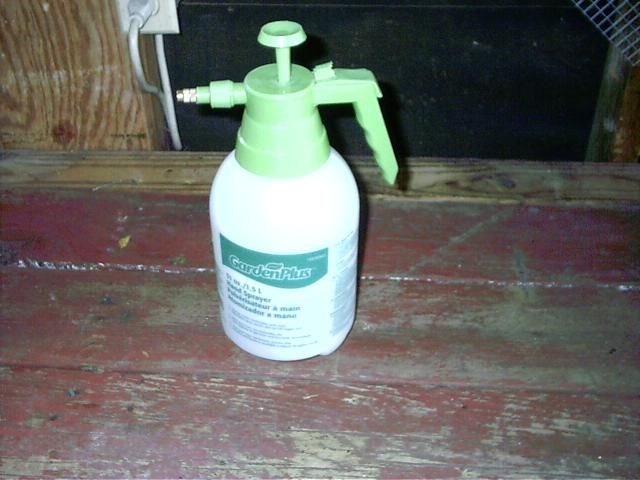
Adjust the spray to a cone. This increases the atomization of the water to optimize the conversion to steam once the spark plug fires.
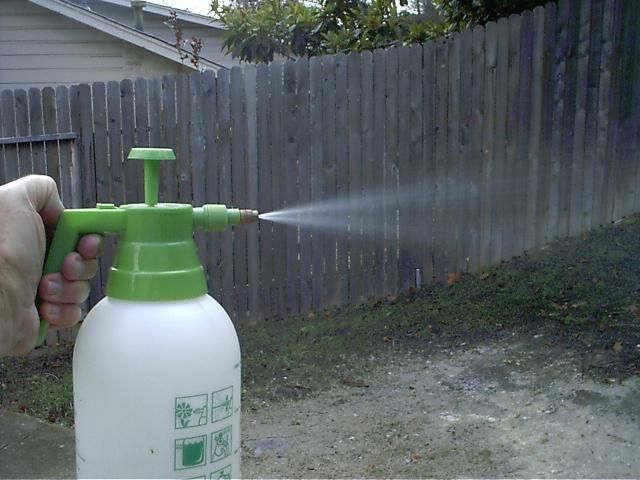
Okay, how's the engine warm up coming along? Nope, not yet. The temperature gun is showing the thermostat housing at only 115.8 degrees F.
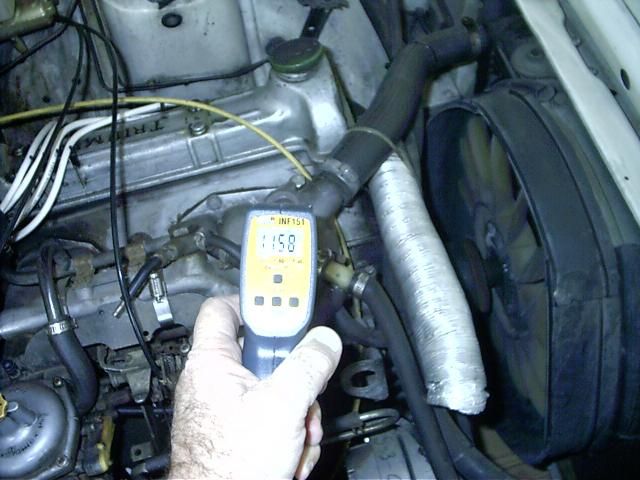
How about now? The dash mounted vacuum gauge has risen to 19" and the temperature gauge is up to it's usual 3/8s level with an idle of 800 RPMs. I think we're ready.
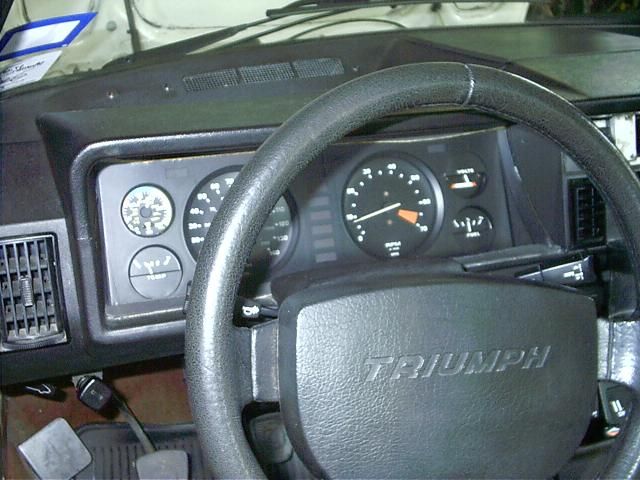
At all times keep the engine revved by pressing on the balance bar tab between the carburetors. This car is a 1976 model with manual chokes. Your engine may differ, but the engine must be kept revved during this process. With the rev's up, squirt the water spray into one carburetor mouth at a time. As the engine starts to bog, cease the water allowing the engine to recover. Repeat several times for each carburetor.
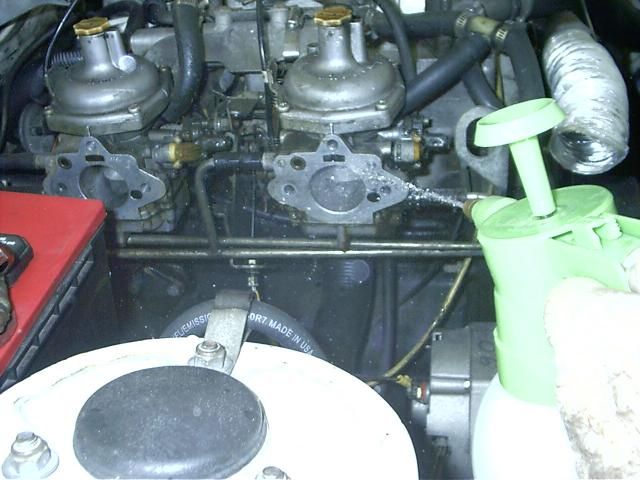
Here is the tailpipe. Note the water drippings on the concrete from the cleaning process. The exhaust sound is now fuller and the light sounds of the valve actions are evident. The engine is now clean.
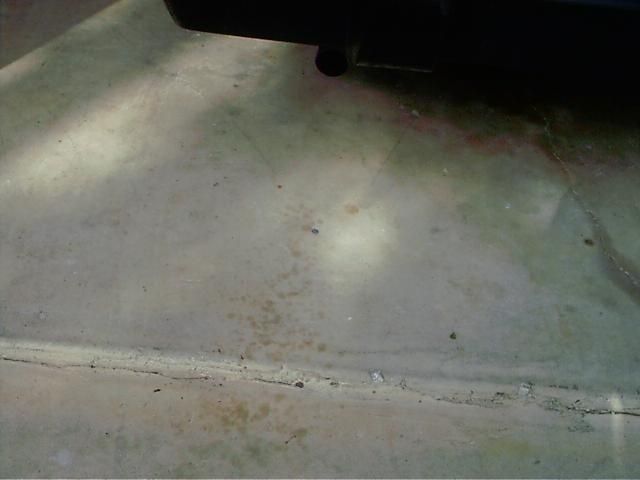
Some versions of this exercise use various aftermarket solutions like Seafoam, or STP, or KFC's Col. Sanders chicken grease. While these fine products may have a dollop of detergent in them, they are oil based and no benefit can come from adding carbon when the desired effect is to get rid of it. You will kindly note the exhaust drippings in the above photo are clean. Any of the above products will leave a dirty spot on the concrete. Not to mention the water is free, which is always a good thing.
There you have it, sanitized for your protection combustion chambers at no cost to your bank account.
You're welcome.
Mildred Hargis









